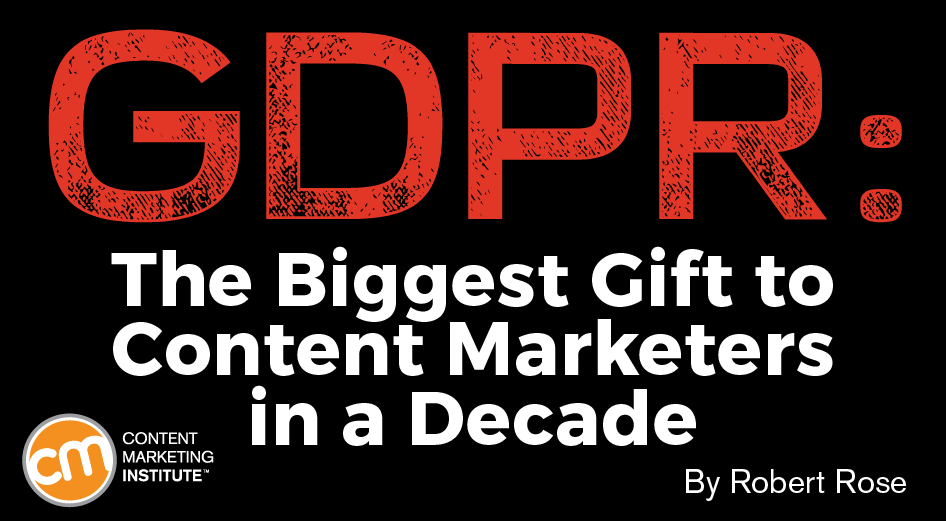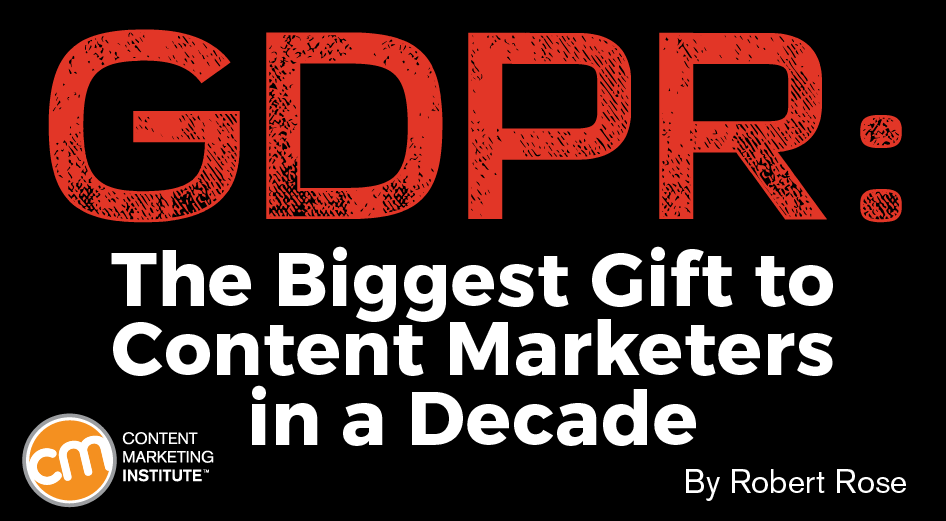GDPR and the fundamental shifts in personal data management aren’t now (nor ever have been) an issue of legal policy or technology. The regulators didn’t create a set of explicit, exact, and ultimately gameable rules that would make up the GDPR. And engagement is the ultimate goal here, isn’t it? At the time, I gave the audience strategist these main responsibilities: Audience development – building in the content promotion programs that will ultimately acquire and/or retain the most targeted A-level audiences to the company’s content platforms Audience segmentation – understanding which programs produce the highest-quality audience members, and segmenting them into natural stratifications of business value Audience valuation – auditing audiences to understand what data you have and what data is needed to enrich the audience asset Audience integration – working with disparate parts of the business to understand where and how having insight or access to audiences can help optimize the business strategy Audience measurement – managing the audience asset and measuring its value over time as a broader part of a content marketing effort I’m going to add one more bullet to this job description (or at least an addendum to the segmentation responsibility): audience data shepherd. As, again, my friend Tim explained about the immediate opportunity of the GDPR: Once you do figure out how to institute those (privacy) policies and begin data protection by design and other strategies then you’re in the position to create genuinely trust-based relationships with customers and prospects. Treat audiences of those experiences as you would customers of those new products or services. In CMI founder Joe Pulizzi’s introduction to our book, Killing Marketing, he writes something extraordinarily important: Traditional advertising, direct marketing, digital marketing, and even social media are all transforming. But the interesting thing to me is the last sentence in Joe’s quote. What content marketing promises is the ability to mine data ourselves; to become the trusted source of interesting things that gather an audience. Hear Robert Rose, CMI’s chief strategy advisor, in person and find the spark to innovate your content marketing program.

“We’ve updated our privacy policy.” Seen much of that sentence lately?
I’m writing this May 28, three days after the enforcement date of new European data privacy regulations – commonly known as the GDPR (General Data Protection Regulation). One of the unintended and more humorously ironic consequences of the much buzzed about May 25 deadline was the deluge of email everybody received in the week leading up it.
All the emails contained the declarative, and slightly passive aggressive, subject line of “we’ve updated our privacy policy.” The ironic part is not only were most of the emails unnecessary (as many recipients already provided consent), but many of the emails were illegal under GDPR because the senders had no consent to ask for consent.
Additionally, it’s clear to me that European regulators had a bit of a dark sense of humor. Don’t they know that you never set a Friday deadline for a technology or policy rollout? Don’t they understand that is the surest way to ruin everyone’s weekend? I’m convinced they were aware and purposely did it on both accounts.
I have to imagine more than a few weekends were ruined by the mad scramble to send an email saying, “Our privacy policies have been updated” and bring digital marketing groups into compliance. Companies like The Los Angeles Times and Chicago Tribune decided to go dark for all EU citizens. Others – unsure if their lists were opt-in or not – sent emails saying “Uh, yeah, if you don’t opt in again – we’re going to delete you.” One company I’m aware of deleted more than 60,000 from its subscriber list. Again, those reactions were almost certainly overkill and have the firm stamp of a lawyer advising how to minimize any potential exposure.
But here’s the thing. It’s still wildly unclear what “compliance” even means. Anyone who tells you they have GDPR “completely figured out” is just plain wrong. No one will truly understand the meaning of the regulation in GDPR until the first lawsuits are litigated. (They already have been filed.)
GDPR and the fundamental shifts in personal data management aren’t now (nor ever have been) an issue of legal policy or technology. Looking at the strategy of how marketers manage consumer data purely from a legal and/or IT perspective is a little like asking the local geologist about how to manage the impending disaster from a meteor strike.
Marketers will not legalize or “software” their way out of the GDPR challenge. They must innovate, design, and create their way into the GDPR. The one thing absolutely clear since we at CMI started talking about GDPR more than a year ago is that it is the biggest opportunity in more than a decade for content marketers to become strategic.
Audiences ARE customers
Like the dark sense of humor about deadlines, one should also assume the GDPR creators’ frustrating ambiguity in the regulation’s 200-plus pages is on purpose. The regulators didn’t create a set of explicit, exact, and ultimately gameable rules that would make up the GDPR. Rather they simply gave guidance to what the future of personal data aggregation should look like for businesses. In other words, they created a framework or philosophy rather than a list of checkboxes that could become dated or “growth-hacked.” As my colleague Tim Walters put it in an interview, “They want you to figure out new, clever, inventive ways of doing business within the confines of the regulation.”
The key to this innovation isn’t to give up on using personal data to optimize content and marketing strategies. It is rather to begin to care much more about the data we are being given.
Marketers need to lean in to the more information they are receiving and treat people with the same care that they would (or should) give customers. In other words, ask yourself, “If we treated the data of audiences/leads with the same care that we treated the data of customers, what would that marketing system look like?” Or as Simon Carroll, an internet privacy expert, recently put it:
When someone grants permission they are acting consciously, becoming an active participant rather than a passive source of data to be pillaged. Permission equals engagement. And engagement is the ultimate goal here, isn’t it?
If he…

COMMENTS